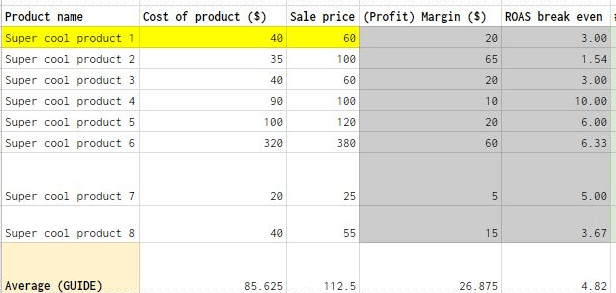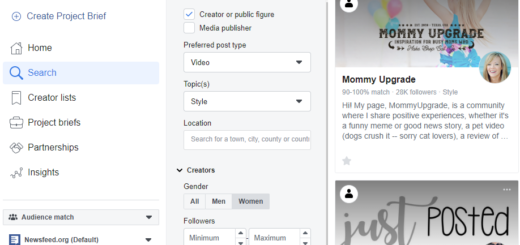
Are your Facebook Ads successful? This question is one that, we marketers, tend to ask ourselves quite often. Determining whether or not your Facebook Ads are suitable for your business isn’t easy. You need to be able to track the metrics that indicate that you are making on Facebook, or any other platform for that matter, more than what you spend (ad spend). It isn’t the number of clicks, neither the number of conversions but rather the ROAS. In this article, we’ll go through the ways to calculate your ROAS to determine how successful you are with your Facebook Ads.
ROI or ROAS?
Although these two terms are often used interchangeably, the truth of the matter is that these aren’t quite the same. ROI stands for Return on Investment while ROAS stands for Return on Ad Spend. In practice, ROI takes into account all the expenses and all costs accrued within your business. Not product-related expenses only. In this tutorial, I will be focusing on ROAS but what you choose depends on your business’ needs.
How do you calculate ROAS?
ROAS is the ratio of total website conversion value (as passed to your Facebook Pixel events) divided by your ad spend. Saying your ads have a ROAS of 100 means that for every dollar you invest in advertising, you get 100 dollars in return.
A ROAS can be one of 3 things:
- ROAS>1: this means that you are at least covering your ad expenses with revenue. The bigger than 1 your ROAS is the more money you make (revenue) for every ad dollar you spend. Ideally, you will want to be in this scenario.
- ROAS=1: this means that for every dollar you spend you get a dollar in return. This means that you are making back the money you are investing in your ads. This is what’s called a “break even”.
- ROAS<1: this means that you aren’t making any money from your ads. This might mean a variety of things; from Facebook not being your channel to targeting the wrong audience, bad landing page experience etc. Only a thorough test can help you decide what the case for you is.
Importance of ROAS
You can calculate your ROAS on a campaign, ad set or ad level to see whether specific campaigns/ad sets/ads produce positive ROAS and make important decisions based on that information (increase/decrease budget, pause campaigns etc.). The ROAS, as already mentioned, shows you if your ads are being profitable. For this reason, ROAS may serve as an ideal Key Performance Indicator (KPI).
How can I calculate the right ROAS for my business?
With businesses varying greatly, in the budget, resources, etc. no one ROAS estimate will work for all. For some businesses a ROAS of 3 is quite good for others a ROAS of 5 may yield more profitability. You should aim to achieve at least a ROAS that will allow you to break even and then, seek to achieve a higher ROAS. But how can you calculate your ROAS?
Calculating your target ROAS for your Facebook Ads
You need to know how much your product costs you and how much you want to earn. These two will define your sale price.
I have created an excel sheet that will help you find what should be your target (base) ROAS.
Cost of product: How much this product costs you.
Sale price: How much you sell your product.
Profit margin: The net amount you will be making after subtracting your costs from your sales price (calculated automatically).
ROAS: this column provides you with your break-even ROAS per product taking into account. This assumes that you are using all of your profit margin (100% of profit margin).
Your target ROAS will differ depending on 1) the percentage of profit you would like to invest in your ads in the form of a Facebook ad spend and 2) the sale price of the product.
You can calculate the average ROAS for your products (in the case you offer few products) and use that as a guide for how successful (or not) your campaigns are. Do have in mind that extreme highs and lows are factored in (in the case that your products’ sale price ranges from very cheap to very expensive).
Example of ROAS calculation
Say you are selling a 40$-product (cost of the product+ fees etc) for 60$, what should your break-even ROAS be?
I insert the above values into my spreadsheet (see the highlighted cells in the above screenshot) and here is what I get:
- Profit per product sold: 20$
- ROAS (break-even): 3
Simply put, if you spend 19$ on ads you will make 1$ and if you spend 21$ then you’ll make -1$. This means that you loose 1$.
So, in order for your campaign to be profitable, you need to achieve a ROAS higher than 3.
Making the most out of your ROAS calculation
Now that you have figured out your ROAS, here are some things you can do:
Set up automated rules based on your ROAS. You can define a set of conditions based on your ROAS that once met they will execute a set series of actions, ex. increase or decrease ad set’s daily budget by 15%.
Define different ROAS KPIs for your prospecting and remarketing campaigns. Usually, campaigns targeting people upper in your marketing funnel (cold audience) won’t help you meet your target ROAS whereas when targeting people lower in your marketing funnel your campaigns tend to deliver higher ROAS. You should consider defining, different ROAS for your Brand campaigns than your remarketing (DPAs, etc.) but make sure that their overall ROAS shouldn’t be below your set target.













